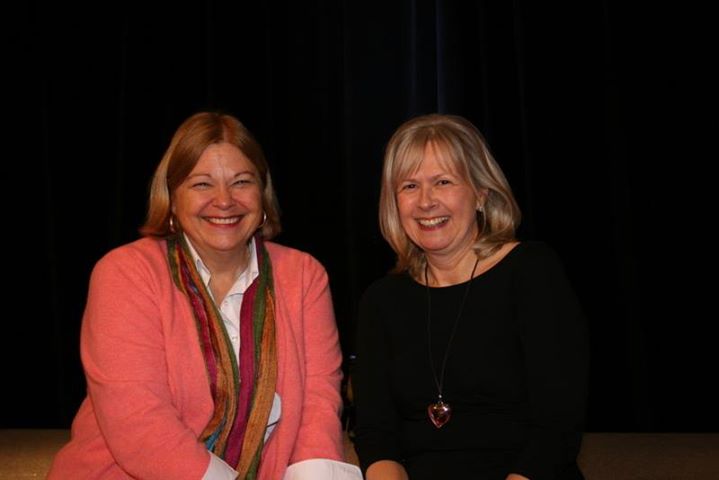As we crossed the milestone of the 25th WCET Annual Meeting, the WCET community took the time to celebrate the past while not dwelling there but rather planning for the future. As promised, not only did the weather in Denver deliver a stunning showing of Rocky Mountain fall, the conversations ignited during the WCET 25th Annual Meeting invigorated participants as well. If you were able to join us and don’t see your favorite resource, session or conversation mentioned, please share it with your WCET community in the comments.
Student Success CIG Meeting:
- Looking to answer the question: Who is responsible for student engagement?
- Future topics the Student Success CIG will address are student support services for (1) veterans (2) competency based learning programs.
Learn more about the WCET Common Interest Groups (CIG).
Boost Your IEQ Takeaways:
- IEQ = improving education quotient or improving educational quality
- #1 takeaway from presenter John Sener (@jsener): We have a spectacular opportunity to use online learning technology to improve all of education.
State Authorization Highlights:
- Marshall Hill announced that several documents and an FAQ about the State Authorization Reciprocity Agreement will soon be available on their website: http://nc-sara.org/ As more information becomes available, it will be posted to this site.
- Russ Poulin and Marshall Hill announced that there still is no federal timeline for reinstating the U.S. Department of Education’s state authorization regulation for distance education. They want to do it, but they have been mired in gainful employment negotiations. ADDENDUM: Since the meeting, we’ve heard that the Department of Education will be moving forward with a Negotiated Rulemaking Process that will include addressing state authorization for distance education. The hearings will be early next year into the Spring. Watch for more information as we get details.
Pressures and Power: Re-Imagining Higher Education for the New Reality – Dr. Paul LeBlanc

As the opening keynote, Dr. LeBlanc shared a look into his history, which now helps drive his passion for reforming higher education. Some highlights:
- We are losing the American Dream, it’s more like the Danish Dream now. When Dr. LeBlanc went to undergrad, he could put himself through working construction in the summers, you can’t do that now.
- The 4C’s of working with adult students: Credentials, Cost, Convenience & Completion.
- We have a financial sustainability problem in American higher education – funding will not return and we cannot cut our way to sustainability we must innovate.
- There are three uses of technology 1. Do what we do better. 2. Do what we do cheaper. 3. Re-think processes.
- Seat time, tied to the credit hour, tracks how long a student sat, not how much they learned. It’s a legacy system that needs to be disrupted.
View the recording of Dr. LeBlanc’s presentation.
Managing Online Education Survey
- The survey results will be released in December. The preliminary statistics show that half of the respondents did not know their online course completion rate and 42% did not know their completion rate for on-campus courses. Less than half require students to take an orientation model before taking online courses. Of those who have partially or fully adopted quality rubrics: 58% regional accrediting standards, 49% state/provincial best practices, 42% Quality Matters, and 10% Sloan-C’s Quality Scorecard.
In-depth Session: Conversation about Competency Based Learning
- Fred Hurst, NAU, offered his favorite quote as the opener to his part of the talk: Change is good. You go first. – Scott Adams, Dilbert Cartoon.
- A danger in competency based learning – if direct assessment is a new optional currency, we don’t have the exchange rate yet for the current currency of the credit hour.
- A concern related to competency based programs is the ability of learning management systems to accommodate and innovate.
- Transparency of rubrics and competency maps empower students – they always know what is expected of them.
- Competencies are more modular in construction, allowing removal and exchange of singular competencies within programs.
- Kay Gilcher: I do not see regional accrediting agencies as obstacles to innovation.
Dr. Vernon Smith: Portmont College at Mount St. Mary’s
- Employers want work ethic, teamwork, problem solving, communication (oral & written) and hands on training.
- 72% of educators, 35% of employers and 50% of students believe they are prepared for employment. There is a significant gap in that belief!
- Learn more about Portmont College at Mount St. Mary’s.
View the recording of Dr. Smith’s presentation.

WCET Pioneers of the Edtech Frontier
- Barbara Beno: “Those in distance education were more engaged in issues of quality and effective teaching than those teaching traditionally.”
- Michael Goldstein: What many in colleges aren’t realizing is that their competitors will be different types of organism’s, not just other colleges. And there is no mechanism to assure quality for those providers.
- Ellen Wagner: We can be on the bus or under the bus. I’d rather be driving the bus.
View the recording of the Pioneers panel.
In-depth Session: Focus on Technology, Innovation, and Adoption
Jane Hart, an internationally recognized expert on trends and adoption of technology tools for learning led this showcase of new and not-so-new tools for learning.
- Utilized latest results of the annual Top 100 Tools for Learning survey.
- Coursesmart hared tech directions for the future.
Recording coming soon – watch our YouTube page for the update.
Top Lessons Learned from the PAR Framework:
- 20 WCET member institutions, sharing de-identified student and course level data – based on a set of 70 common data definitions (which are openly licensed).
- PAR is the only big data project that has student-level data + common data definitions allowing the data to be deeply drillable, providing actionable reports for institutions.
- Institutional partners are utilizing the PAR Framework to make change on campus, improving student success.
View the PAR Framework Common Data Definitions and the Student Success Matrix.
WCET Smackdown, Powered by Pecha Kucha
In a lively and humorous start to Friday morning, ten brave souls took the stage to present 20 slides, for 20 seconds each – no pausing, no going over on time. The presenters were asked to focus on the next 25 years – some did, some didn’t – all were entertaining. We were reminded to focus on why we do what we do, be mindful in our practice, be a speedboat, consider a ‘fitbit’ for higher education, how championing online ed is like selling sushi in Idaho, and to keep an eye out for Google Eyeball. Andy Black gets the award for speaking the most like an auctioneer as he talked about video conferencing platforms and Rob Robinson schooled us all in how the Burning Man festival is an analogy for higher education. As always, team Boyd-Garn had us all rolling with their take on everything old is new again. View the Smackdown Presentations.
Videoconferencing Platform Sandbox
Video in all its permutations is coming full circle as educators realize the impact and value of providing a synchronous platform to deliver lectures and connect students. To help attendees sort through the best solution for their institution, WCET offered the videoconferencing sandbox. This allowed attendees to experience the technology firsthand and hear from institutional users about their experience adopting and supporting the different platforms.
In-Depth Session: Conversation about MOOCs
- A Simple Guide to Navigating the MOOC Muddle (WCET Talking Points) shared.
View the recording of the Conversation about MOOCs.
Expanding Remote Science Labs in North America
- Featured the WICHE Project The North American Network of Science Labs Online (NANSLO).
- With using remote science labs, students use real equipment that is superior than anything they have in their teaching labs. For example, the student can use a highly-calibrated measure to monitor the change in solution colors as the temperature changes. In a lab the student might use a simple strip that changes color. The nuances of the experiment are lost in the traditional lab.
- It does not make sense to teach students how to use lab tools that only existing in the classroom laboratories.
- California State University system is considering having all first year labs conducted through simulations or remote science.
WCET Awards Lunch
Congratulations to the 2013 WOW recipients:
- Lane Community College for OER Faculty Fellowship.
- University of Central Florida for Obojobo.
- University of North Carolina for The Online Proctoring Network.

Congratulations to the 2013 RJ Award Recipient: Fred Hurst
Fred Hurst of the Extended Campuses at Northern Arizona University, honored with WCET’s top award, receiving the2013 Richard Jonsen award.
View the recording of the awards presentations.
In-depth Session: Conversation about Mobile Learning
Robbie Melton – the App-ologist, will be sharing a new app digest crowdsourced from her top apps and those of the participants in this conversation.
- Among the many apps that Robbie demonstrated were:
- Translated words into American Sign Language.
- Translated text from English to Spanish.
- Connected to a small portable document camera.
- Allowed the instructor to present from a mobile device.
- Used augmented reality to show a 3D model of a beating heart.
View the recording.
The Social Learning Revolution

Jane Hart discussed how the social web is changing the way we are learning and what this means for both higher education and the workplace
- For those on the social web, learning will never be the same again.
- Universities should help students develop an online presence in the social web to promote themselves to future employers.
- Construct your PKM (reference to: http://www.jarche.com/pkm/)
All social media – tweets, Facebook posts, Instagrams – tagged #WCET13 were captured utilizing Storify. [View the story “WCET 25th Annual Meeting #WCET13” on Storify]
Mark Your Calendar for #WCET14: November 19 – 21, 2014 – Portland, Oregon. See you next year!
















